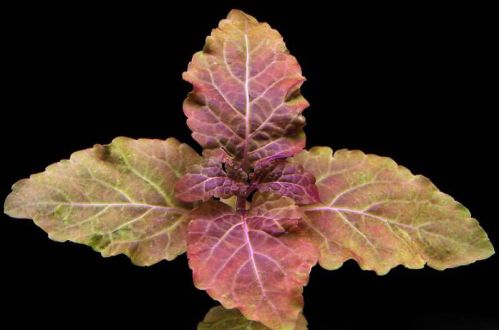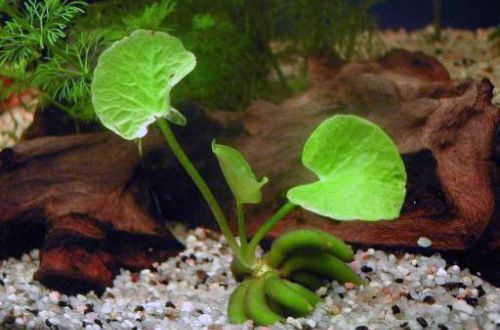
Hyptis Lorenz
Hiptis Lorenz, scientific name Hyptis Lorentziana. Another synonymous name was thought to be Hemigraphis traian, but in 2009 it was determined to be a separate species, albeit a very similar one.

Comes from South America. The natural habitat extends to the vast Amazon basin and smaller river systems in Uruguay and Argentina. It grows in regularly flooded regions along the banks of rivers, lakes, tropical swamps and other bodies of water. In nature, it can reach up to 2 meters in height.
The plant forms a strong erect stem with large oval leaves with a jagged edge. The leaves are arranged in pairs along the stem. In a submerged position in a favorable environment, leaf blades acquire a rich red-violet hue.
When propagating, you can use lateral shoots formed in the leaf axils, or cut the stem directly above the whorl of leaves about 8-10 cm from the soil surface. Young sprouts will appear at the cut point, and the separated part, when placed in the soil, will become a new plant.
Hiptis Lorenza is able to grow in a wide variety of conditions both on wet substrates and completely submerged in water in large aquariums. A high level of lighting is essential. To achieve the characteristic color of the leaves, it is necessary to maintain the level of nitrates around 10 mg / l, phosphates – 1–2 mg / l. Recommended is the additional introduction of carbon dioxide during the day to stimulate growth.




